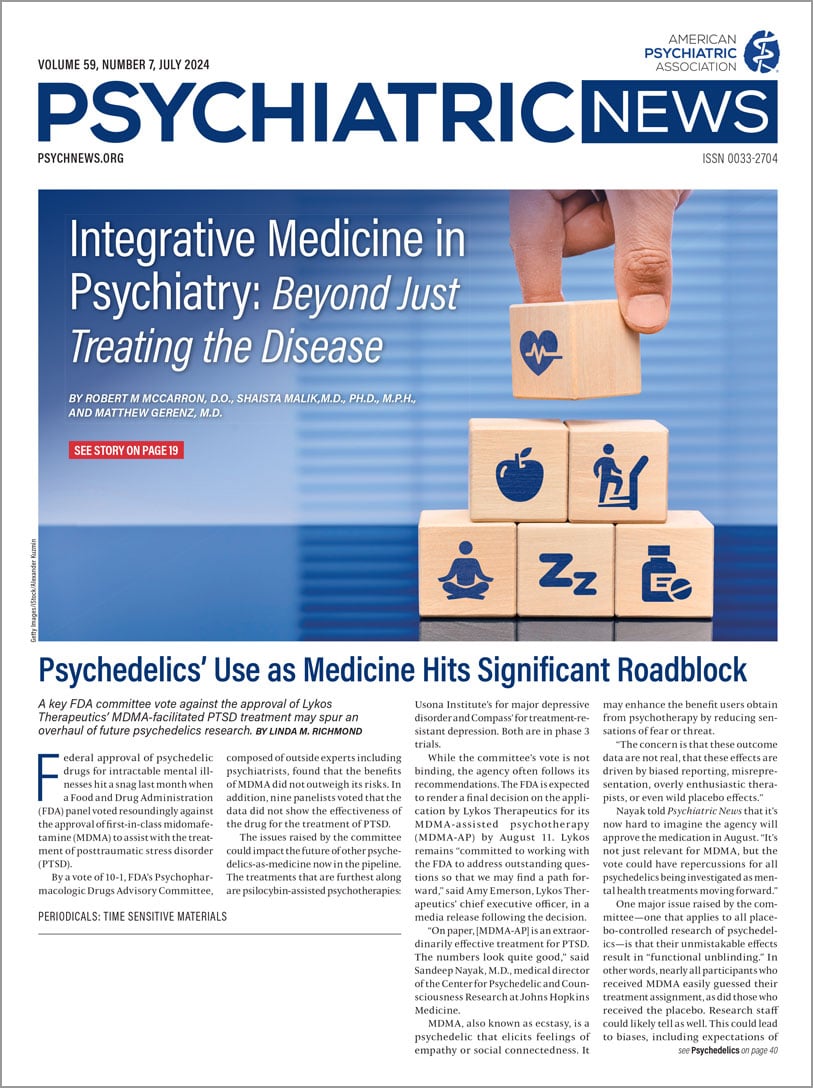An intriguing, large-scale observational study of psychedelic use among Swedish teens suggests that psychedelic use by itself may be associated with a reduced probability of developing psychotic or manic symptoms. The study authors and other experts urged caution in the interpretation of the results, however.
Corresponding author Otto Simonsson, Ph.D., a postdoctoral researcher at the Department of Neurobiology at the Karolinska Institute in Solna, Sweden, acknowledged the study has significant limitations; for example, the data are retrospective and entirely self-reported.
The current findings, published in JAMA Psychiatry, require follow-up studies with more rigorous designs, Simonsson said. “Very little remains known about the associations between naturalistic psychedelic use and the outcomes reported in our study, especially among adolescents.”
Simonsson suspects that findings in future studies will largely depend on factors like the study population (for example, healthy individuals and individuals with bipolar I disorder) and extra-pharmacological factors such as set and setting. “Our findings should therefore not be interpreted as strong evidence that psychedelic use would inevitably lead to fewer psychotic symptoms,” Simonsson said.
The study used cross-sectional data from a set of 16,255 Swedish twins, of whom 8,889 were female and 7,366 were male. At age 15, the twins answered questions on their history of naturalistic psychedelic use and current self-reported psychotic or manic symptoms. After adjusting for the use of other substances such as alcohol or cannabis, past psychedelic use was associated with fewer psychotic symptoms.
The researchers found no conclusive relationship between psychedelic use and manic symptoms in the whole twin sample. In individuals with a higher genetic vulnerability to bipolar I disorder or schizophrenia, however, psychedelic use was associated with more manic symptoms than in participants with a lower genetic vulnerability.
Simonsson et al.’s study is interesting and has unexpected findings, Charles Grob, M.D., observed. Grob is a professor of psychiatry and pediatrics at the UCLA School of Medicine and director of the Division of Child and Adolescent Psychiatry at the Harbor-UCLA Medical Center. Grob has a long history studying the naturalistic and therapeutic use of psychedelics here and abroad.
It is not surprising that psychedelic use may induce psychosis in young people with a strong biogenetic vulnerability for major psychiatric illness—particularly bipolar I disorder, he noted. What is surprising and counterintuitive, however, is the finding that naturalistic use of psychedelics by adolescents without a genetic vulnerability to severe mental illness “may predict for lower rates of psychotic illness than a matched population without exposure to psychedelics,” he added.
Grob speculated on potential explanations for this finding—assuming it is corroborated by future studies. It may be that young people today have a better understanding of the relative risks of psychedelics and the need to optimize “set and setting” to reduce the likelihood of an adverse outcome. He also pointed out that Simonsson et al.’s study sample was drawn entirely from Swedish twins, and wondered if the drug purity of psychedelics in the Swedish psychedelic subculture may be better than that in the United States or elsewhere.
The current study comes in the wake of increasing legal and societal acceptance of psychedelic therapy in psychiatry, but many questions remain about effectiveness and long-term effects(see story on page 1). Psychiatrists, however, are familiar with individual cases of people who have suffered serious adverse consequences from psychedelic use in nontherapeutic settings.
Gregory Barber, M.D., who co-wrote a
case report of psychosis following nontherapeutic use of psilocybin, noted that the Simonsson et al. study adds support for the potential risk of psychedelic use in individuals with a personal or family history of psychosis or mania. Barber is a psychiatrist in private practice in Bethesda, Md., with expertise in psychopharmacology.
“A study of naturalistic psychedelic use in adolescents has very little generalizability to adult patients participating in psychedelic-assisted therapy,” Barber observed. Psychedelic research in carefully controlled settings should not be conflated with research on naturalistic psychedelic use, as this risks neglecting the outsized influence of “set and setting” and other factors in mediating psychedelic outcomes, he noted.
While the authors of the current study strike a cautionary note regarding the connection between psychedelics and lower psychosis risk, there are statistical studies going back years that have suggested psychedelic use is not independently associated with subsequent development of serious psychiatric disorders. A
large statistical analysis in 2015 employed a data set of approximately 135,000 randomly selected individuals in the United States who reported psychedelic use and subsequent development of psychiatric disorders. The authors found no evidence that psychedelic use was an independent risk factor for psychiatric disorders.
Another
statistical study published in 2015 explored the relationship between psychedelic use, psychological distress, and suicidality in a sample of more than 190,000 adults in the U.S.
The authors of that study concluded that “Lifetime classic psychedelic use was associated with significantly reduced odds of past month psychological distress, past year suicidal thinking, past year suicidal planning, and past year suicide attempt, whereas lifetime illicit use of other drugs was largely associated with an increased likelihood of these outcomes.” (They defined “classic” psychedelics as LSD, psilocybin, and mescaline.)
The Simonsson study was supported by the Ekhaga Foundation and Olle Engkvist Foundation. ■
